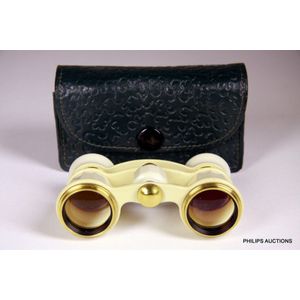Dragon Ring with Purple Stone in Low Carat Gold
A dragon ring with purple paste stone. Low carat gold. Size J 1/2. Weight 8.1g.
You must be a subscriber, and be logged in to view price and dealer details.
Subscribe Now to view actual auction price for this item
When you subscribe, you have the option of setting the currency in which to display prices to $Au, $US, $NZ or Stg.
This item has been sold, and the description, image and price are for reference purposes only.
- Carat - A carat (abbreviated "ct") is a unit of measurement used to describe the weight of a diamond or other gemstone, and separately is a unit of measurement used to describe the weight of precious metals such as gold,.
For gemstones, one carat is equal to 0.2 grams or 200 milligrams. The weight of a diamond is one of the Four Cs (along with cut, colour, and clarity) that are used to determine a diamond's value.
It is important to note that a diamond's weight does not necessarily correspond to its size. A diamond's cut, which affects how well it reflects light, can make a diamond of a lower weight appear larger than a diamond of a higher weight. Additionally, the carat is not the only factor to determine the value of a diamond, other factors such as clarity, colour and cut are important too.
In the gold industry, the purity of gold is measured in carats (abbreviated "ct"), with 24 karats being pure gold and lower carat numbers indicating a lower purity level. So, for example, 18 carat gold is 18/24 or 75% pure gold, and 12 carat gold is 12/24 or 50% pure gold. - Paste / Rhinestone / Diamante - Paste (or rhinestone or diamante) is the name given to a coloured glass composition used for imitation gemstones, or to imitation gemstones made of glass.
Although the technique of glassmaking had been known for thousands of years, but it wasn't until a lead glass with similar optical properties to diamonds were invented by a German jeweller working in Paris (either "Stras" or 'Strasser") in the early 18th century that "paste" gemstones became popular.
There was no social stigma attached to wearing imitation stones, and they were worn in situations where highway robbery was a possibility. The 18th century settings were of very high quality, equivilent to real gemstone jewellery.
In the nineteeth century the quality of paste jewellery declined and it has remained the poor cousin to genuine gemstones ever since.
This item has been included into following indexes:
Visually similar items

Necklace of Baroque and Tahitian pearls
Sold by
in
for
You can display prices in $Au, $US, $NZ or Stg.

Sterling silver & large grey Mabe pearl ring
Sold by
in
for
You can display prices in $Au, $US, $NZ or Stg.

A pair of vintage opera glasses, 20th century, of faceted design in ivorine and brass, with 2.5 times magnification; with a green leather pouch, width 10 cm
Sold by
in
for
You can display prices in $Au, $US, $NZ or Stg.

Set of 18 carat dress studs by J.M Wendt in original case
Sold by
in
for
You can display prices in $Au, $US, $NZ or Stg.
